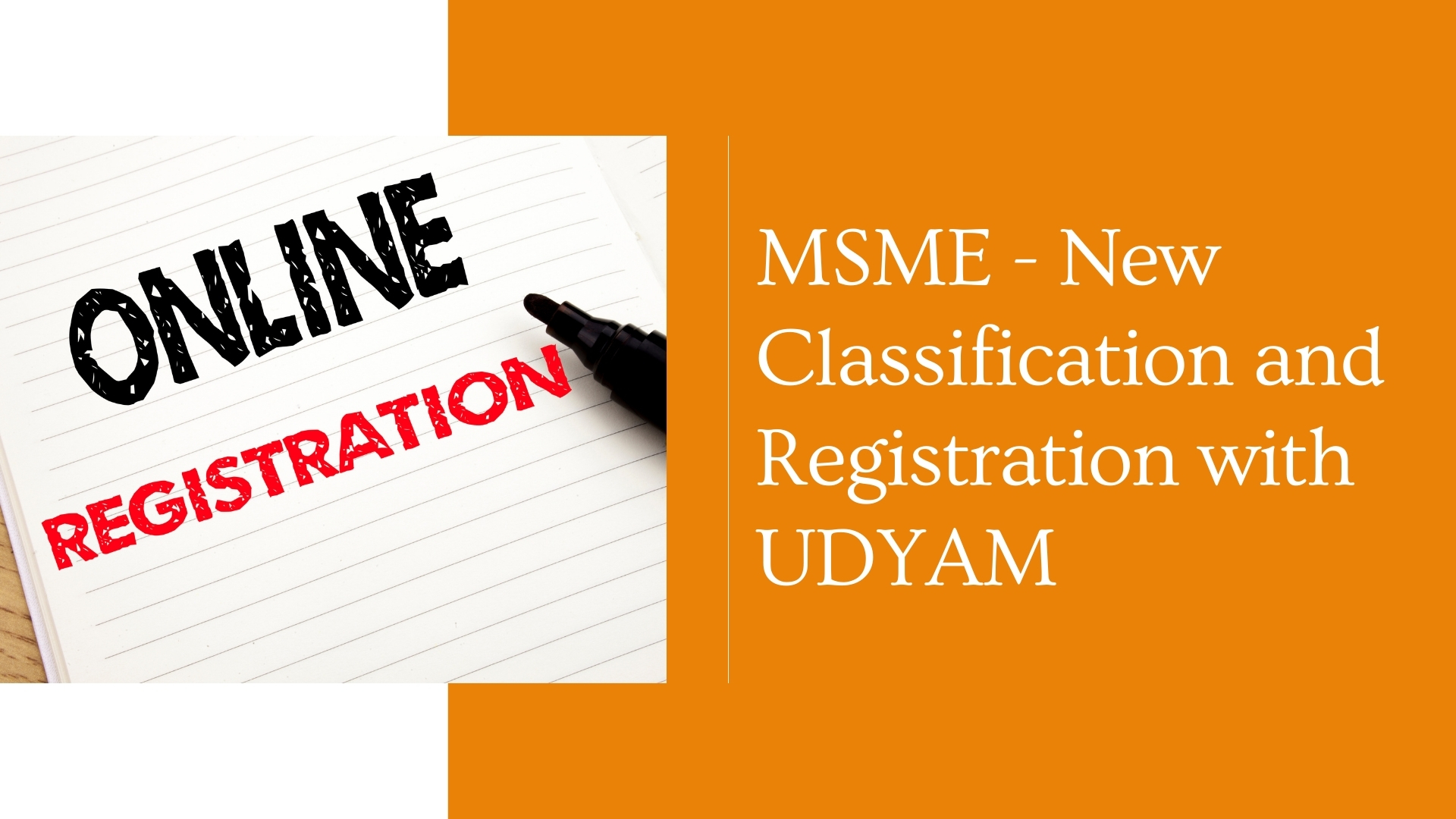What is the UDYAM registration process?
Contents
hide
- The Union Ministry of Micro, Small, and Medium Enterprises (MSME) issued a notification on June 26 announcing the commencement of a new process for classification and registration of MSME enterprises, dubbed “Udyam registration,” on July 1, 2020.
- All existing registered businesses with a valid Udyog Adhaar number will be migrated to the Udyam registration system.
- Upon registration, an entity (referred to as “Udyam” on the Udyam Registration page) will be given a permanent identifying number known as the “Udyam Registration Number.”
- An e-certificate titled “Udyam Registration Certificate” will be delivered upon completion of the registration process.
Is it necessary to register an existing business?
- On or after July 1, 2020, all existing firms registered under EM–Part-II or UAM must re-register on the Udyam Registration portal.
- In compliance with this notice, all businesses that were registered before June 30, 2020, will be reclassified.
- Existing enterprises that were established before June 30, 2020, will only be valid until March 31, 2021.
- Any firm that is registered with another Ministry of Micro, Small, and Medium Enterprises agency must also register with Udyam Registration.
How do you decide on a classification category based on investment and turnover?
Enterprise classification will be based on a combination of investment and turnover criteria:
- If a business exceeds the investment or turnover ceiling limitations for its current category, it will be moved to the next higher category; however, no business will be moved to the lower category unless it falls below the investment and turnover ceiling limits for its current category.
- For example, which category would a firm with an investment of Rs. 4 crores and a turnover of Rs. 5 crores fall into?
- According to the notification, if the investment is Small and the turnover is Micro, the business will be placed in the higher category of Small.
- All units with the same Goods and Services Tax Identification Number (GSTIN) registered against the same Permanent Account Number (PAN) will be classified as a single entity, with aggregate values used to determine whether the entity is micro, small, or medium.
Calculation of the plant and machinery or equipment investment:
- The previous year’s Income Tax Return will be used to determine whether or not to invest in plants, machinery, or equipment.
- In the event of a new business, the investment will be computed based on the promoter’s self-declaration.
- Self-disclosure will be based on the invoice value of a plant and machinery or equipment excluding the plant and machinery or equipment.
- When a new business files an ITR, it must base its investment in plant and machinery or equipment on the information provided in the ITR.
The term “plant and machinery or equipment” should have the same meaning as “plant and machinery” in the Income Tax Rules, 1962, enacted under the Income Tax Act, 1961, and shall refer to all physical assets of the business (other than land and building, furniture and fittings).
Turnover Calculation:
- Export of goods or services, or both, is not taken into consideration when calculating the turnover of micro, small, or medium business.
- The GSTIN must be linked to information about an enterprise’s turnover and exports turnover under the Income Tax Act or the Central Goods and Services Act (CGST Act).
- The turnover-related numbers of such businesses that do not have a PAN will be evaluated on a self-declaration basis until March 31, 2021, after which PAN and GSTIN will be required.
MSME updates information on the Udyam Registration portal:
- On a self-declaration basis, an organization with an Udyam Registration Number must update its information online on the Udyam Registration site, including the contents of the preceding financial year’s ITR and GST Return, as well as any other supplementary information that may be required.
- If the essential information is not updated within the time-frame indicated in the online Udyam, the enterprise’s status will be suspended.
- The categorization of the business will be updated based on information provided or received from government sources such as ITRs or GST returns.
- Communication concerning the change in status will be provided to the enterprise in the event of graduation (from a lower to a higher category) or reverse-graduation (sliding down to a lower category).
Procedure for MSME Registration on the Udyam Registration Portal:
- The registration form will be available on the Udyam Registration portal.
- Udyam Registration will require an Aadhaar number.
- In the case of a proprietorship firm, the Aadhaar number will be that of the proprietor, the controlling partner in the case of a partnership firm, and a Karta in the case of a Hindu Undivided Family (HUF).
- A Company, a Limited Liability Partnership, a Cooperative Society, a Society, or a Trust must provide their GSTIN and PAN, as well as their Aadhaar number, if they are a Company, a Limited Liability Partnership, a Cooperative Society, a Society, or a Trust.
- Any information gaps from earlier years when the entity did not have a PAN must be filled out on a self-declaration basis if the entity is correctly registered as an Udyam with a PAN.
- There can only be one Udyam Registration per company.
- Any number of operations, including production, service, or both, can be identified or added in a single Udyam Registration.
Suggested Read- udyam registration benefits in hindi
Anyone who willfully misrepresents or tries to suppress self-declared facts and figures in the Udyam Registration or updation procedure will be subject to the penalties set forth in section 27 of the Act.
